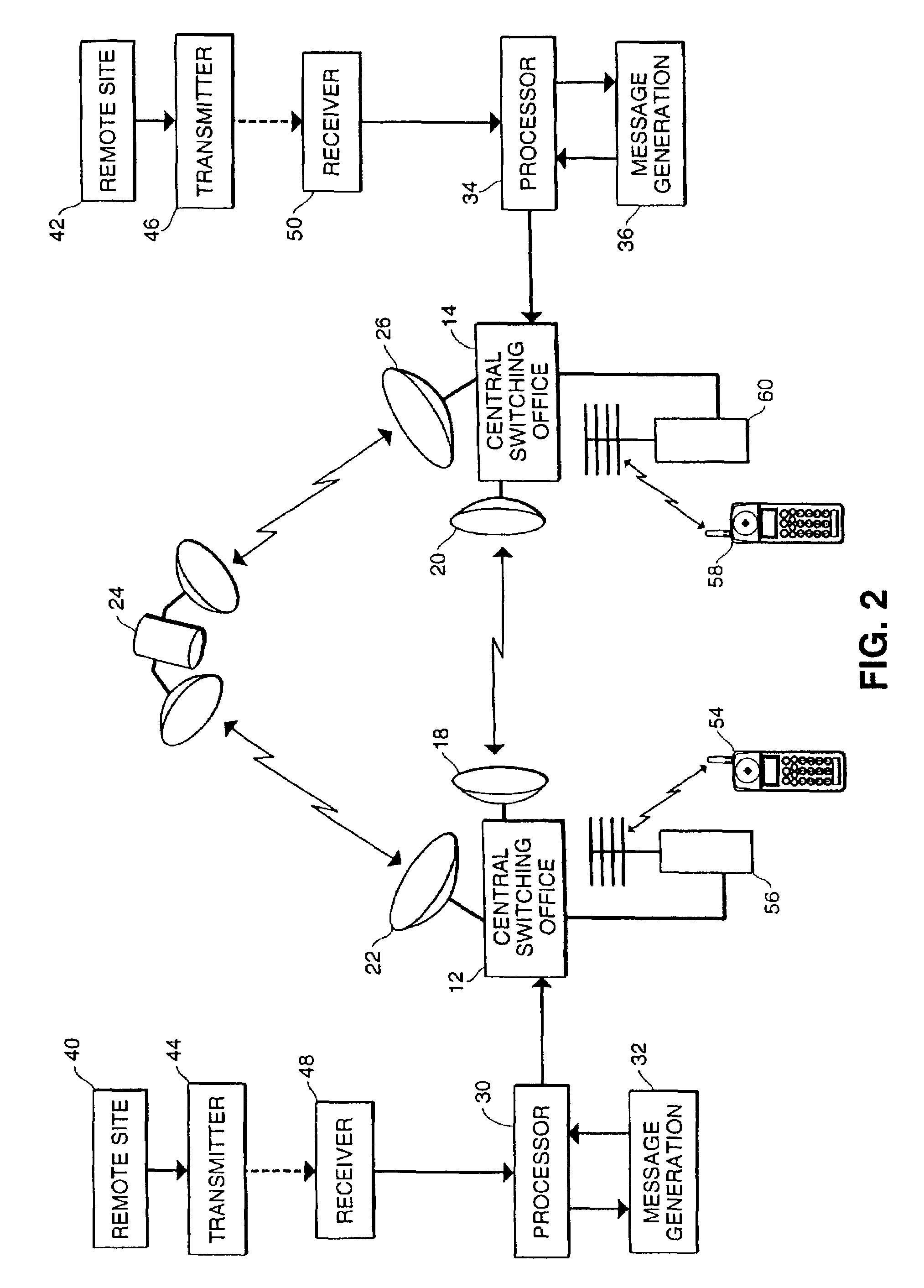Telecommunication system using message presentation during a ringing signal period
a technology of telecommunication system and signal period, applied in the field of telecommunication system, can solve the problems of delay, sleevi patent, and specific limitations of land based, and achieve the effect of quick gathering experience in how to provide targeted advertising
- Summary
- Abstract
- Description
- Claims
- Application Information
AI Technical Summary
Benefits of technology
Problems solved by technology
Method used
Image
Examples
Embodiment Construction
[0042]Referring now in more detail and by reference characters to the drawings, FIG. 1 illustrates a telecommunication system which allows for introduction of a message such as an advertising or promotional message over a telephone communication link. In this respect, the basic conventional telephone switching system is employed with the present invention, only modifying that system for purposes of introducing a message for delivery to the caller or the receiving party or both.
[0043]Referring in particular to FIG. 1, there is provided a first location 10, as for example, a residential location from which a telephone call can be initiated. Any telephone call from this first location 10 would be delivered directly to a central switching office or so-called “switchboard”12, which services the area for that first telephone. In this case, the central switching office could adopt a telex office, a PBX unit, or the like. Notwithstanding, the central switching office 12 then causes that mes...
PUM
 Login to View More
Login to View More Abstract
Description
Claims
Application Information
 Login to View More
Login to View More - R&D
- Intellectual Property
- Life Sciences
- Materials
- Tech Scout
- Unparalleled Data Quality
- Higher Quality Content
- 60% Fewer Hallucinations
Browse by: Latest US Patents, China's latest patents, Technical Efficacy Thesaurus, Application Domain, Technology Topic, Popular Technical Reports.
© 2025 PatSnap. All rights reserved.Legal|Privacy policy|Modern Slavery Act Transparency Statement|Sitemap|About US| Contact US: help@patsnap.com



